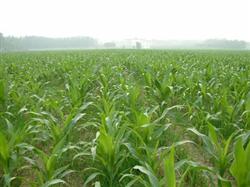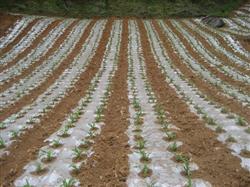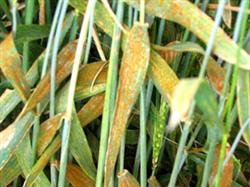Management and Technology of Spring Maize during Summer

At present, spring maize in Qianxi area has entered the jointing stage, which coincides with the peak period of water and fertilizer demand, and it is also the key period of yield formation, so the summer management of maize should be strengthened. 1. Timely topdressing of corn should be based on nitrogen fertilizer, and it is best to apply it in two stages, that is, 20 kg urea per mu in the trumpet stage and 10 kg urea per mu in the male and silking stage. If the topdressing is completed at one time, it should be concentrated in the big trumpet stage, 30 kg of urea per mu and 5 kg of potassium dihydrogen phosphate can enhance the lodging resistance of the plant. During fertilization, chemical fertilizer should not be too close to the root of corn, but should be applied in the middle of two rows of corn and covered with soil after application to reduce the loss of fertilizer effect. Second, mid-tillage herbicidal corn is a favorite middle-tillage crop, reasonable mid-tillage can not only effectively remove weeds, but also increase soil temperature and promote plant growth. Dry ploughing can destroy surface capillaries, prevent underlying water evaporation, and play a role in preventing drought and preserving soil moisture; ploughing after rain can break soil consolidation, accelerate soil water evaporation, and play a role in flood prevention. Summer ploughing should not be too deep, 4.5 to 6 centimeters is appropriate, so as not to hurt the root. For the fields with more serious grass damage, you can choose the method of chemical weeding, 200 ml of paraquat (g without a trace) per mu, 100 kg of water, directional spray weeding, spray head should install protective cover, so as not to harm corn leaves and surrounding crops. Third, the corn trumpet mouth period of timely drainage and irrigation is the critical period of water demand, and the yield will be seriously affected in case of drought. Places with irrigation conditions should be watered in time to resist drought and prevent "sticking neck drought". The grain filling period of spring corn is long, and the impact of "autumn drought" on maize yield is also very serious. Farmers have the saying that "spring drought is not drought, autumn drought is reduced by half". If the corn milking period encounters drought, it should also be watered in time to resist drought. Although corn is a high fertilizer crop, it is not resistant to waterlogging. If there is a large area of stagnant water in the field after rain, it should be drained in time to prevent premature senescence of rotten roots from affecting yield. Pay attention to the investigation and treatment of diseases and insect pests the main diseases and insect pests harmful to corn in this period are corn borer, armyworm and corn large and small spot disease. Monitoring should be strengthened and effective measures should be taken to control them in time.
- Prev

Current management measures of spring sowing corn
1. Take measures according to local conditions and select improved varieties. Popularize Yedan 13, Xiyu 3, Huayu 4, Zhongdan 32, Chenghai 1 and Expedition 808 in plain and hilly areas. Yedan 22, Yedan 51 and 9362 with short stem and short growth period are selected for interplanting in cotton fields. Zhongnuo 1 can be planted in suburban areas.
- Next

There is a wonderful way to prevent wheat freezing injury
What is wheat rust? Wheat rust is also called jaundice. There are three kinds of rust: stripe rust, leaf rust and stem rust. A disease that occurs most widely and causes most damage to wheat. After wheat rust infection, chlorotic spots appear on the surface of wheat leaves or straw at the initial stage, and yellow or reddish brown powder blisters grow later, that is, the pathogen summer spore pile.
Related
- The first cup of black tea in spring, the flavor and history of tea gardens in Kenya, Africa
- The computer can not only choose potatoes, but also grow tea rice. AI will grow winter oolong tea champion.
- It is not only the inflated tea bitten by insects, but also engraved with the four seasons tea in Beipu.
- The Oriental Beauty Tea Festival in Zhuxian County takes the stage at the weekend to experience the plus-size feast of oil tea.
- & quot; Oriental Beauty Tea & Exploration of Emei in Hsinchu, the hometown of quot;
- The new variety of strawberry "Tainong 1" dessert is the first choice with mellow aroma. Crimson gorgeous
- History of Tea in Taiwan: from Wild Inner Mountain to Export Tea Garden
- Two types of Taiwan Oriental Beauty Black Tea won the British three-Star Award for Childhood Tea Xiang Zhang Jiaqi changed from pilot to champion tea maker.
- Banana species and varieties: the planting history of Taiwan Xianren banana and dwarf banana is long, is banana disease resistant?
- Coffee planting Technology: Qianjie Coffee from Seedling to harvesting

